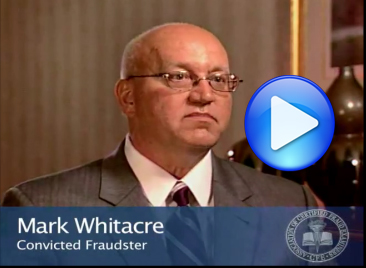 Research conducted by the Association of Certified Fraud Examiners (ACFE) shows that the typical organization loses an estimated 5 percent of its revenues to fraud each year, and more than 85 percent of all occupational fraud cases involve employee theft. The threat of fraud and embezzlement is not only significant; it is universal. Put simply, any company that employs individuals is at risk of losing assets to employee theft. Combating this risk through proactive fraud prevention measures is more cost-effective and reputation-preserving than spending resources on detection, investigation and loss recovery. Therefore, an effective fraud prevention program is crucial to protecting an organization’s assets.
Research conducted by the Association of Certified Fraud Examiners (ACFE) shows that the typical organization loses an estimated 5 percent of its revenues to fraud each year, and more than 85 percent of all occupational fraud cases involve employee theft. The threat of fraud and embezzlement is not only significant; it is universal. Put simply, any company that employs individuals is at risk of losing assets to employee theft. Combating this risk through proactive fraud prevention measures is more cost-effective and reputation-preserving than spending resources on detection, investigation and loss recovery. Therefore, an effective fraud prevention program is crucial to protecting an organization’s assets.
Arguably the most effective mechanism for preventing fraud is convincing employees that attempts to defraud the company will be quickly detected. When deciding to steal, fraudsters typically do not anticipate being caught. In fact, many fraudsters start out believing that they will only steal once and then put the money back as soon as they can, before anyone notices — although most never do. Consequently, increasing the perception of detection — even more than the threat of sanctions — can effectively deter many tempted employees from engaging in that first fraudulent act.
The following are six suggestions on how to create a work environment that simultaneously deters fraudsters and encourages employee participation.
1) Implementing employee monitoring systems is a clear way to send the message that the company is actively seeking out misconduct. When used openly and in compliance with legal restrictions, surveillance devices, Internet and email monitoring, and active managerial oversight can all be effective tools in the fight against fraud. However, such measures must be implemented with balance and caution, as employees who feel unduly scrutinized might use it as a justification for dishonesty (e.g., “If they’re going to treat me as if I’m stealing, I might as well prove them right”). But a non-accusatory system of employee monitoring that is well-communicated can deter fraudulent activity without alienating honest staff members.
2) The number of employees who resort to fraud is a small fraction of the overall workforce. Turning the organization’s ethical staff into an army of sentinels that is educated about the dangers of fraud and equipped with a means to report suspicions can greatly increase the perception that frauds will be caught. In addition, anti-fraud training for employees and managers can clarify common gray areas that might provide an opportunity for employees to test the waters for fraud.
To be effective, anti-fraud training should educate employees on:
- what fraud is (and is not),
- how unreported fraud hurts everyone in the organization,
- what red flags to watch for and
- how to report suspicions of wrongdoing.
3) To further increase the fraudster’s perception of being detected, the organization should have a formal reporting mechanism, such as a hotline, that enables individuals to come forward with tips and information. Such mechanisms should receive reports from both internal and external sources, allow anonymity and confidentiality, and be well publicized and easily accessible. Additionally, to encourage employees to report suspected fraud, management should enact and publicize an anti-retaliation policy to protect whistleblowers.
4) Effective fraud prevention also involves creating an environment where employees do not feel pressured to resort to fraud and cannot justify dishonest actions based on the observed unethical actions of others. Security professionals should work with management to foster an ethical corporate culture that encourages honesty from all employees. This can be formalized in a well-written, meaningful code of conduct that management openly adheres to and supports.
5) Additionally, open-door policies and programs that offer employees assistance or counseling in times of need can be particularly effective in addressing the root causes that underlie many fraudsters’ misdeeds.
6) Conducting employee background checks can prevent hiring mistakes that let known thieves in through the front door. However, as most occupational fraudsters are first-time offenders, background checks have limited effectiveness in preventing fraud and should be but one tool in the company’s anti-fraud program. Nonetheless, background checks of new hires and employees up for promotion — as well as routine checks on employees with access to company finances, sensitive information or other valuable resources — underscore a commitment to hiring and retaining only honest and ethical employees.
Security and loss prevention professionals play a critical role in ensuring their organizations’ fraud prevention programs include well-designed and properly implemented components that effectively deter employee theft and fraud. Initiatives such as monitoring systems, anti-fraud training, hotlines, an ethical corporate culture and a background-check policy are vital to protecting the organization’s resources from potential thieves within.



